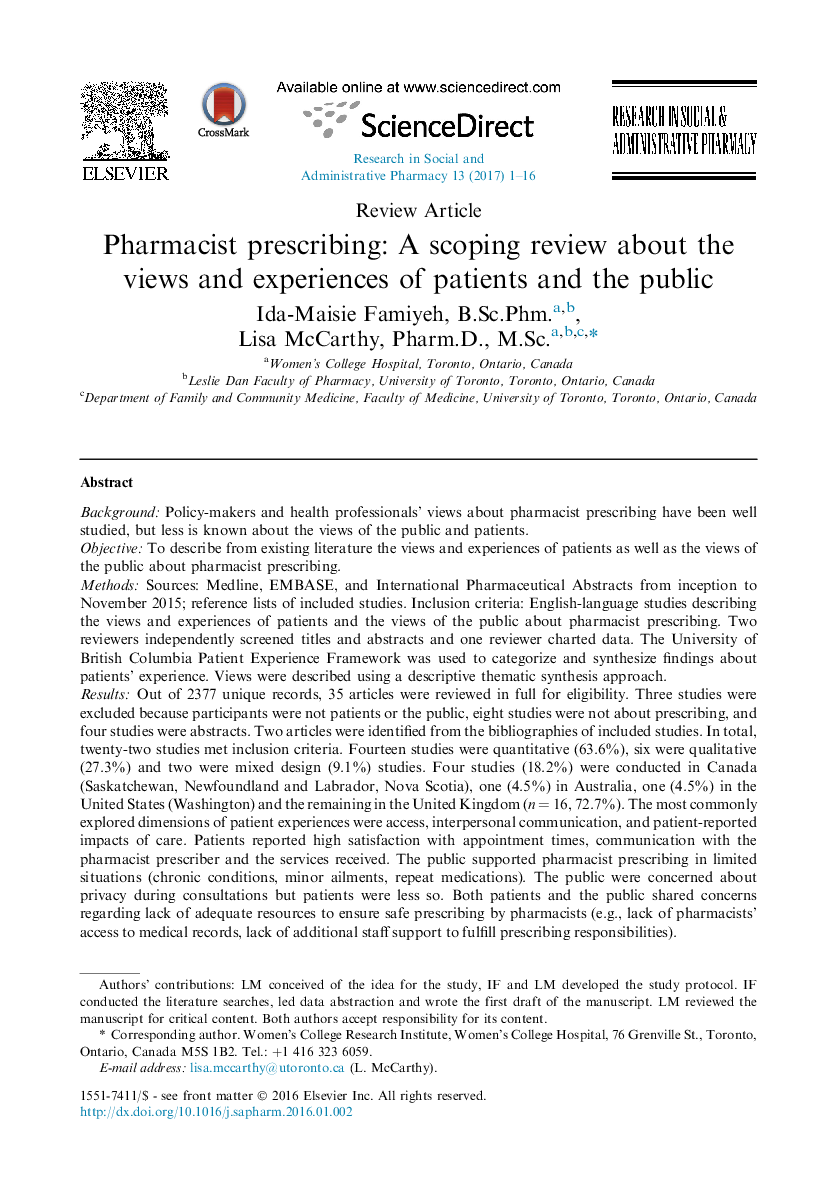| کد مقاله | کد نشریه | سال انتشار | مقاله انگلیسی | نسخه تمام متن |
|---|---|---|---|---|
| 5551374 | 1402945 | 2017 | 16 صفحه PDF | دانلود رایگان |
BackgroundPolicy-makers and health professionals' views about pharmacist prescribing have been well studied, but less is known about the views of the public and patients.ObjectiveTo describe from existing literature the views and experiences of patients as well as the views of the public about pharmacist prescribing.MethodsSources: Medline, EMBASE, and International Pharmaceutical Abstracts from inception to November 2015; reference lists of included studies. Inclusion criteria: English-language studies describing the views and experiences of patients and the views of the public about pharmacist prescribing. Two reviewers independently screened titles and abstracts and one reviewer charted data. The University of British Columbia Patient Experience Framework was used to categorize and synthesize findings about patients' experience. Views were described using a descriptive thematic synthesis approach.ResultsOut of 2377 unique records, 35 articles were reviewed in full for eligibility. Three studies were excluded because participants were not patients or the public, eight studies were not about prescribing, and four studies were abstracts. Two articles were identified from the bibliographies of included studies. In total, twenty-two studies met inclusion criteria. Fourteen studies were quantitative (63.6%), six were qualitative (27.3%) and two were mixed design (9.1%) studies. Four studies (18.2%) were conducted in Canada (Saskatchewan, Newfoundland and Labrador, Nova Scotia), one (4.5%) in Australia, one (4.5%) in the United States (Washington) and the remaining in the United Kingdom (n = 16, 72.7%). The most commonly explored dimensions of patient experiences were access, interpersonal communication, and patient-reported impacts of care. Patients reported high satisfaction with appointment times, communication with the pharmacist prescriber and the services received. The public supported pharmacist prescribing in limited situations (chronic conditions, minor ailments, repeat medications). The public were concerned about privacy during consultations but patients were less so. Both patients and the public shared concerns regarding lack of adequate resources to ensure safe prescribing by pharmacists (e.g., lack of pharmacists' access to medical records, lack of additional staff support to fulfill prescribing responsibilities).ConclusionPatients' experiences with pharmacist prescribing were generally positive. There were shared concerns between patients and the public about pharmacist prescribing. Opportunities for further research include strategies for building public experience with pharmacist prescribing and methods for addressing concerns identified by patients and the public.
Journal: Research in Social and Administrative Pharmacy - Volume 13, Issue 1, JanuaryâFebruary 2017, Pages 1-16
